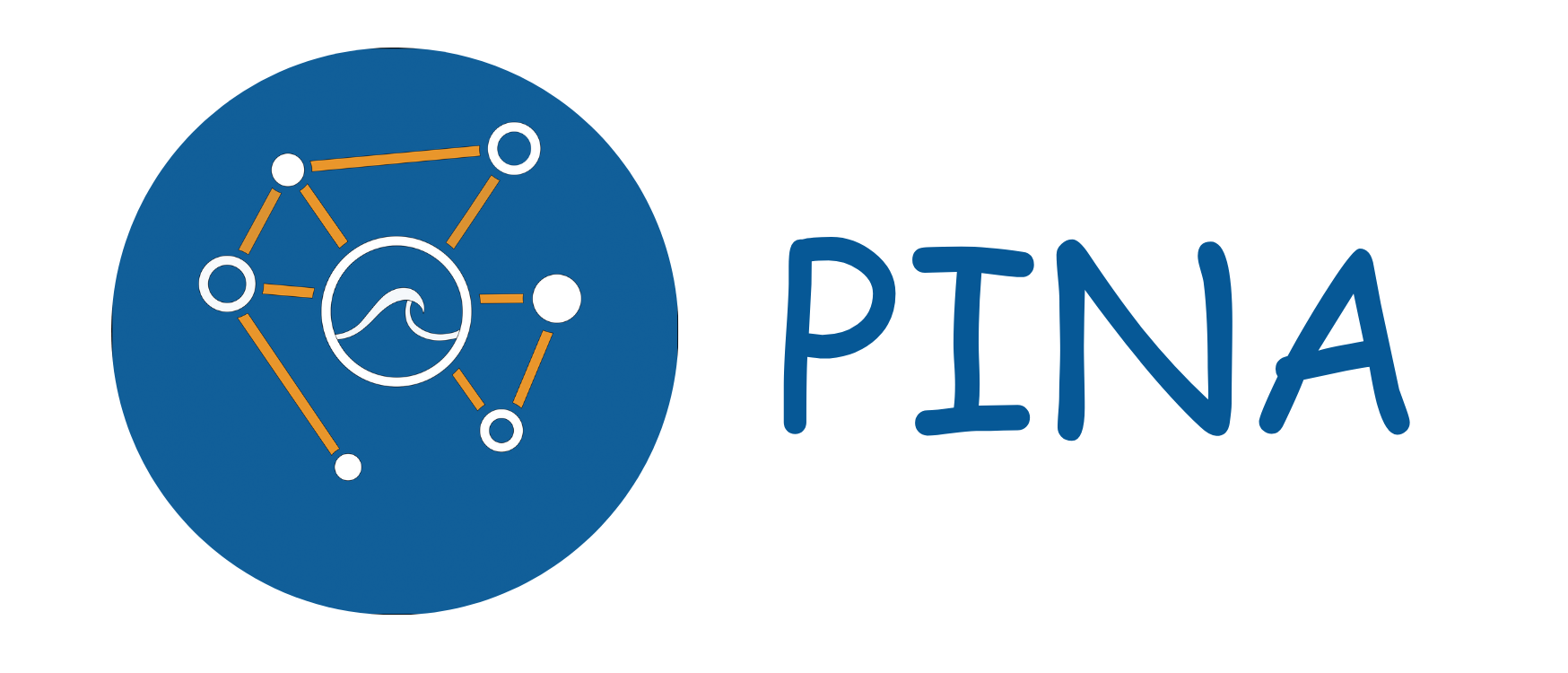"""Module for the Reduced Order Model solver"""
import torch
from .supervised_solver_interface import SupervisedSolverInterface
from ..solver import SingleSolverInterface
[docs]
class ReducedOrderModelSolver(SupervisedSolverInterface, SingleSolverInterface):
r"""
Reduced Order Model solver class. This class implements the Reduced Order
Model solver, using user specified ``reduction_network`` and
``interpolation_network`` to solve a specific ``problem``.
The Reduced Order Model solver aims to find the solution
:math:`\mathbf{u}:\Omega\rightarrow\mathbb{R}^m` of a differential problem:
.. math::
\begin{cases}
\mathcal{A}[\mathbf{u}(\mu)](\mathbf{x})=0\quad,\mathbf{x}\in\Omega\\
\mathcal{B}[\mathbf{u}(\mu)](\mathbf{x})=0\quad,
\mathbf{x}\in\partial\Omega
\end{cases}
This is done by means of two neural networks: the ``reduction_network``,
which defines an encoder :math:`\mathcal{E}_{\rm{net}}`, and a decoder
:math:`\mathcal{D}_{\rm{net}}`; and the ``interpolation_network``
:math:`\mathcal{I}_{\rm{net}}`. The input is assumed to be discretised in
the spatial dimensions.
The following loss function is minimized during training:
.. math::
\mathcal{L}_{\rm{problem}} = \frac{1}{N}\sum_{i=1}^N
\mathcal{L}(\mathcal{E}_{\rm{net}}[\mathbf{u}(\mu_i)] -
\mathcal{I}_{\rm{net}}[\mu_i]) +
\mathcal{L}(
\mathcal{D}_{\rm{net}}[\mathcal{E}_{\rm{net}}[\mathbf{u}(\mu_i)]] -
\mathbf{u}(\mu_i))
where :math:`\mathcal{L}` is a specific loss function, typically the MSE:
.. math::
\mathcal{L}(v) = \| v \|^2_2.
.. seealso::
**Original reference**: Hesthaven, Jan S., and Stefano Ubbiali.
*Non-intrusive reduced order modeling of nonlinear problems using
neural networks.*
Journal of Computational Physics 363 (2018): 55-78.
DOI `10.1016/j.jcp.2018.02.037
<https://doi.org/10.1016/j.jcp.2018.02.037>`_.
Pichi, Federico, Beatriz Moya, and Jan S.
Hesthaven.
*A graph convolutional autoencoder approach to model order reduction
for parametrized PDEs.*
Journal of Computational Physics 501 (2024): 112762.
DOI `10.1016/j.jcp.2024.112762
<https://doi.org/10.1016/j.jcp.2024.112762>`_.
.. note::
The specified ``reduction_network`` must contain two methods, namely
``encode`` for input encoding, and ``decode`` for decoding the former
result. The ``interpolation_network`` network ``forward`` output
represents the interpolation of the latent space obtained with
``reduction_network.encode``.
.. note::
This solver uses the end-to-end training strategy, i.e. the
``reduction_network`` and ``interpolation_network`` are trained
simultaneously. For reference on this trainig strategy look at the
following:
.. warning::
This solver works only for data-driven model. Hence in the ``problem``
definition the codition must only contain ``input``
(e.g. coefficient parameters, time parameters), and ``target``.
"""
def __init__(
self,
problem,
reduction_network,
interpolation_network,
loss=None,
optimizer=None,
scheduler=None,
weighting=None,
use_lt=True,
):
"""
Initialization of the :class:`ReducedOrderModelSolver` class.
:param AbstractProblem problem: The formualation of the problem.
:param torch.nn.Module reduction_network: The reduction network used
for reducing the input space. It must contain two methods, namely
``encode`` for input encoding, and ``decode`` for decoding the
former result.
:param torch.nn.Module interpolation_network: The interpolation network
for interpolating the control parameters to latent space obtained by
the ``reduction_network`` encoding.
:param torch.nn.Module loss: The loss function to be minimized.
If ``None``, the :class:`torch.nn.MSELoss` loss is used.
Default is `None`.
:param Optimizer optimizer: The optimizer to be used.
If ``None``, the :class:`torch.optim.Adam` optimizer is used.
Default is ``None``.
:param Scheduler scheduler: Learning rate scheduler.
If ``None``, the :class:`torch.optim.lr_scheduler.ConstantLR`
scheduler is used. Default is ``None``.
:param WeightingInterface weighting: The weighting schema to be used.
If ``None``, no weighting schema is used. Default is ``None``.
:param bool use_lt: If ``True``, the solver uses LabelTensors as input.
Default is ``True``.
"""
model = torch.nn.ModuleDict(
{
"reduction_network": reduction_network,
"interpolation_network": interpolation_network,
}
)
super().__init__(
model=model,
problem=problem,
loss=loss,
optimizer=optimizer,
scheduler=scheduler,
weighting=weighting,
use_lt=use_lt,
)
# assert reduction object contains encode/ decode
if not hasattr(self.model["reduction_network"], "encode"):
raise SyntaxError(
"reduction_network must have encode method. "
"The encode method should return a lower "
"dimensional representation of the input."
)
if not hasattr(self.model["reduction_network"], "decode"):
raise SyntaxError(
"reduction_network must have decode method. "
"The decode method should return a high "
"dimensional representation of the encoding."
)
[docs]
def forward(self, x):
"""
Forward pass implementation.
It computes the encoder representation by calling the forward method
of the ``interpolation_network`` on the input, and maps it to output
space by calling the decode methode of the ``reduction_network``.
:param x: The input to the neural network.
:type x: LabelTensor | torch.Tensor | Graph | Data
:return: The solver solution.
:rtype: LabelTensor | torch.Tensor | Graph | Data
"""
reduction_network = self.model["reduction_network"]
interpolation_network = self.model["interpolation_network"]
return reduction_network.decode(interpolation_network(x))
[docs]
def loss_data(self, input, target):
"""
Compute the data loss by evaluating the loss between the network's
output and the true solution. This method should not be overridden, if
not intentionally.
:param input: The input to the neural network.
:type input: LabelTensor | torch.Tensor | Graph | Data
:param target: The target to compare with the network's output.
:type target: LabelTensor | torch.Tensor | Graph | Data
:return: The supervised loss, averaged over the number of observations.
:rtype: LabelTensor | torch.Tensor | Graph | Data
"""
# extract networks
reduction_network = self.model["reduction_network"]
interpolation_network = self.model["interpolation_network"]
# encoded representations loss
encode_repr_inter_net = interpolation_network(input)
encode_repr_reduction_network = reduction_network.encode(target)
loss_encode = self._loss_fn(
encode_repr_inter_net, encode_repr_reduction_network
)
# reconstruction loss
decode = reduction_network.decode(encode_repr_reduction_network)
loss_reconstruction = self._loss_fn(decode, target)
return loss_encode + loss_reconstruction
